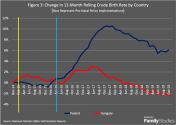China GDP Growth in Second Quarter 2024 Came In At 4.7%
That brings growth in the first half of the year down to 5%. Exports were up 8.6%, factory output grew 5.3%, and high-tech manufacturing grew 8.8%. Urban real disposable income was up 4.6% and rural real dispoable income was up 6.8% in nominal terms in the first half of the year.
However, retail sales grew only 3.7% and real estate investment was down 10.1%. Youth unemployment was still high at over 14%.
Source:
In comparison, U.S. GDP in the first quarter was up 2.9% at an annualized rate. Given China's still low per capita GDP (about 3/10th's of America's on a PPP basis), this is a pretty underwhelming report and
I think you need to adjust your expectations for how fast the no1 economy can actually go. This isn't the 1990s when 15% growth for China only means a slight growth for the whole globe. Nowadays, 5% growth for China means ~1% growth for the entire world. Solely from China.
China has the potential for consistently higher than 5% growth. Domestic demand continues to be a laggard with June retail sales up only 2%. The best solution would be for fiscal stimulus, and my preferred method would be giving marriage and baby bonuses for newlyweds and new parents.
The key stats here are:
1. Continued boom at 5% growth. By far best performing major economy with no potential of being overtaken in sight.
2. Amazing 8.8% expansion for the tech sector.
3. Retail sales growing slower than expected. Can probably be chalked up to falling real estate investment and post covid spending in other things than retail.
4. 10.1% drop in real estate investment. Although it slows our short term gdp growth, it's not a field that gives high societal value gdp, a drop here is highly desirable IF a boom can be maintained at the same time.
Gdp per capita is something that needs to be taken with a massive grain of salt, because (relatively) unproductive billionaires make up a disproportionate amount of gdp per capita. What you should look at is rather the number of middle and middle upper class people per country, as they're the ones driving science, infrastructure and industrial development.
Chasing America in gdp per capita is deceptive, because they're always gonna be boosted by oligarch led system vs China's civilian led system. What you should look at is the number of middle and upper middle class income.
Ambani alone gives every Indian +100$ in gdp per capita. And while Ambani himself is (maybe) more productive than a single Indian, he's himself not doing more to advance society than 1000 Indian engineers, despite being "worth" much more than the engineers in gdp per capita.


